Conga Mine in Peru Halted By Water Concerns, Civic Opposition
U.S. mining company retreats from $US 4.8 billion gold and copper project.
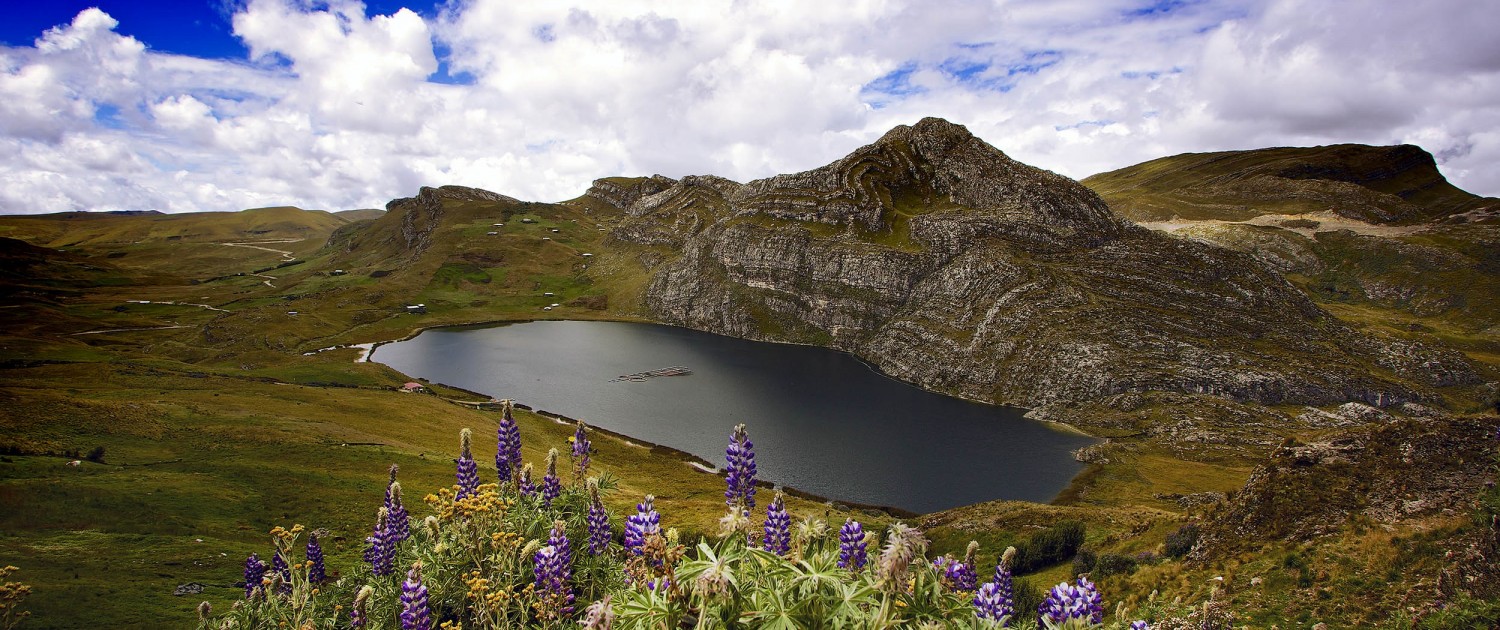
The Andes, the world’s second-highest mountain range, are a picturesque scene of meadows and bare peaks, north of Cajamarca, where the Conga mine would have been located. Photo © J. Carl Ganter / Circle of Blue
By Brett Walton, Circle of Blue
Newmont Mining, the world’s second-largest gold producer, announced in a U.S. financial filing that it is abandoning a $US 4.8 billion copper and gold mine in Peru “for the foreseeable future.”
“Newmont will not proceed with the full development of Conga without social acceptance, solid project economics and potentially another partner to help defray costs and risk; it is currently difficult to predict when or whether such events may occur,” the company wrote in a U.S. Securities and Exchange Commission filing on February 17. “Under the current social and political environment, the company does not anticipate being able to develop Conga for the foreseeable future.”
While Newmont’s decision is partly in response to souring market conditions — the price of copper is down more than 50 percent since a 2011 peak — the withdrawal from Conga is also a recognition that environmental concerns pose a serious financial risk to business. The mine was strongly opposed by Andes farmers because four natural lakes would have been drained and replaced by manmade reservoirs.
Mining, more than most industries, is tied to water. Water is used to mine and process the ore. The chemicals that separate metal from ore can spill and taint rivers and groundwater. Tailings dams that soar to the height of skyscrapers impound a sludge of toxic metals that can bury and poison a stream. A blunder by any company at any step leaves a black mark on the industry. Companies are now paying attention.
“Water is more and more on the agenda for mining companies,” Nicolas Maennling, a policy researcher at the Columbia Center on Sustainable Investment, told Circle of Blue. “The work around that topic has seen increased interest partly because of tailings dam failures and also because social pressure has increased to a level where mines have stopped operations or a project does not go ahead at all.”
The mining industry has had a run of high-profile failures in recent years. Barrick Gold Corporation in 2013 halted development of the Pascua-Lama mine in Chile after the Chile Supreme Court sided with indigenous communities and ruled that its water management system was insufficient for protecting groundwater. The company had already invested $US 5 billion in the project. A tailings dam collapsed on August 4, 2014 at the Mount Polley gold and copper mine in British Columbia, Canada. It sent 25 million cubic meters (6.6 billion gallons) of water and mine waste into area lakes and creeks.
Two days later, in the Mexican state of Sonora, the Bacanuchi and Sonora rivers were tainted by 40,000 cubic meters (10.5 million gallons) of acid solution that spilled from the Buenavista copper mine. And last year, on November, a ruptured tailings dam at an iron-ore mine in Brazil’s Minsa Gerais state killed 17 people and released 32 million cubic meters (8.5 billion gallons) of waste into the Rio Doce.
Those incidents and other water issues, such as groundwater contamination or scarcity, are fresh in the minds of activists fighting against new mines across the continents: a copper mine in Montana’s Smith River watershed; the Carmichael coal mine, the biggest in Australia; nearly a dozen mines on the rivers of western British Columbia; the Tia Maria gold mine, in Peru. According to RepRisk, a research group that analyzes business risk, of the 10 most controversial construction projects in 2015, four were mines.
The mining industry is aware of the challenge. Two-thirds of the 36 mining and metals companies that responded to a 2012 CDP water risk survey said that water problems — flooding, shortages, pollution, community opposition, or stricter regulations — had “detrimental” consequences for their business in the last five years. Newmont is among those that acknowledge the risks.
“We put a lot of thought, energy, and planning into protecting water, both quality and quantity,” Omar Jabara, Newmont Mining spokesman, told Circle of Blue. “It’s important because our operations require water and we have the potential to affect water quality and quantity. To have a social license to get permits, we have to make sure that we pay attention to both. Water is clearly a top priority.”
Decision at Conga
Peru is a heavyweight in the mining world. It ranks third in copper production, third in silver, and sixth in gold. Mining is also a force in the national economy. The industry accounted for $US 16.8 billion in export revenue in 2015, accounting for 61 percent of foreign trade, according to the Ministry of Energy and Mines.
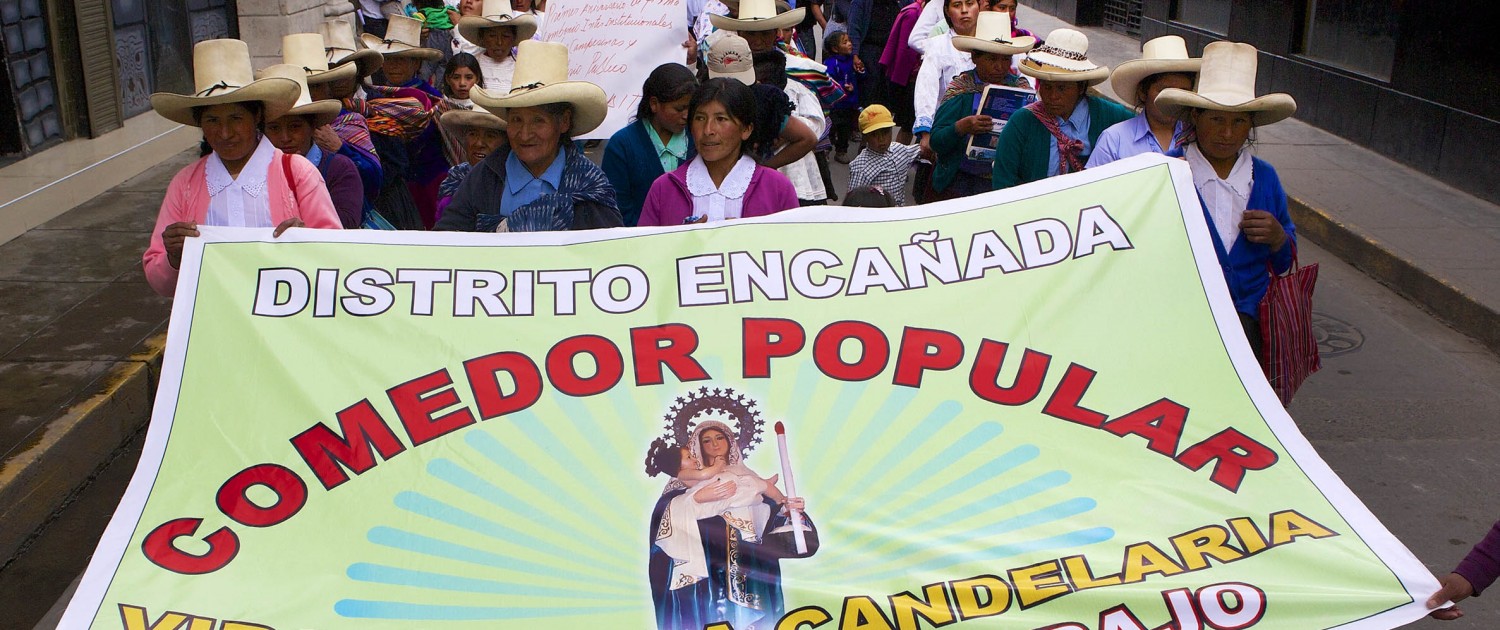
In early June 2014, more than 5,000 mountain residents marched around Cajamarca’s central square in an display of unity for Rondas Campesinas, an alliance of civic groups. © J. Carl Ganter / Circle of Blue
Conga was to be the next big thing in Peru’s ledger — an open-pit mine packed with copper and gold and located 25 kilometers (16 miles) northeast of Yanacocha, a Newmont operation that is the largest gold mine in Latin America. At an estimated $US 4.8 billion capital cost, Conga represented the largest mining investment in Peru’s history.
The expectations met a hard reality. Instead of being torn open by earth-moving equipment, Conga was riven by protests once construction began in 2010. Demonstrations at the mine entrance and nearby Cajamarca grew so fierce that Peru’s newly elected president Ollanta Humala, who ran on a campaign promise of “Water over gold,” declared a state of emergency in November 2011 and asked Newmont to suspend operations. Newmont complied.
The furor was not quelled, though. In July 2012, four people died in clashes with the police in the Cajamarca region, where the mine is located. An ongoing protest by Maxima Acuna de Chaupe, a local farmer, over land ownership in the mining area garnered her the 2016 Goldman Prize for grassroots environmental activism.
The opposition at Conga was noticed around the world. Mining companies in India and Mongolia redoubled their focus on water protection in the wake of the Conga protests.
Newmont is cutting ties with a mine into which significant resources had already been invested. The project partners – Newmont, Compania de Minas Buenaventura, and the International Finance Corporation – spent $1.7 billion on Conga by end of 2015. Newmont maintains that a portion of that investment has improved water reliability and management in Cajamarca. The company spent $US 20 million on the Chailhuagon reservoir, which provides water in the six-month dry season, and $US 13 million on municipal water treatment facilities.
Was the Conga mine a learning experience? “Definitely,” Jabara said. “Some lessons are more pronounced.” He said that communication of the company’s plans for environmental protection, not only with local groups but through the region, are of utmost importance. “We might have all the engineering and technical capacity, but if we are not able to effectively communicate that, we are not going to get a social license,” he concluded.
Brett writes about agriculture, energy, infrastructure, and the politics and economics of water in the United States. He also writes the Federal Water Tap, Circle of Blue’s weekly digest of U.S. government water news. He is the winner of two Society of Environmental Journalists reporting awards, one of the top honors in American environmental journalism: first place for explanatory reporting for a series on septic system pollution in the United States(2016) and third place for beat reporting in a small market (2014). He received the Sierra Club’s Distinguished Service Award in 2018. Brett lives in Seattle, where he hikes the mountains and bakes pies. Contact Brett Walton

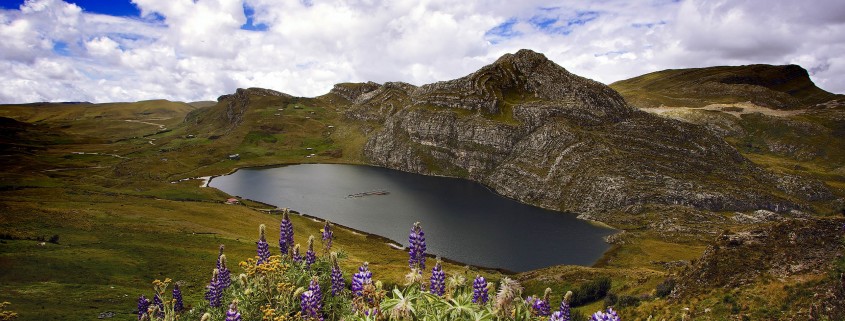

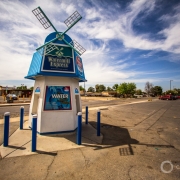
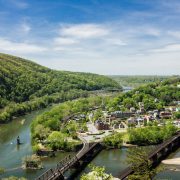

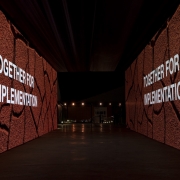
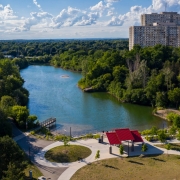
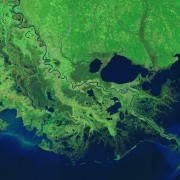




Leave a Reply
Want to join the discussion?Feel free to contribute!